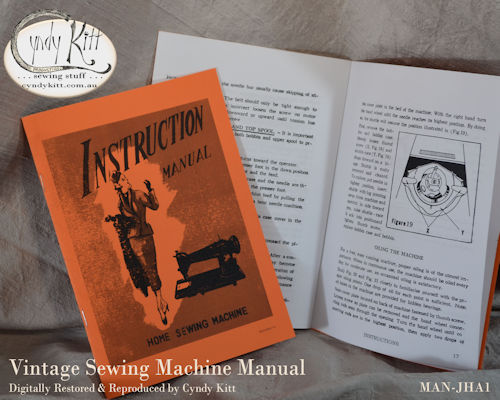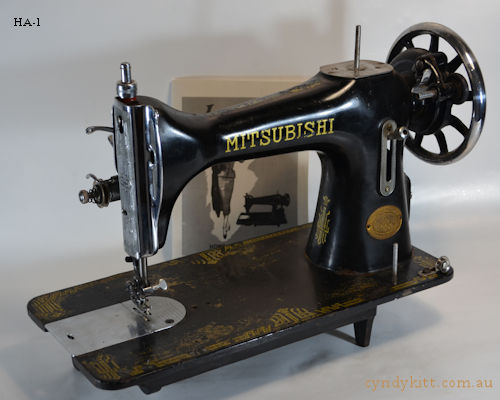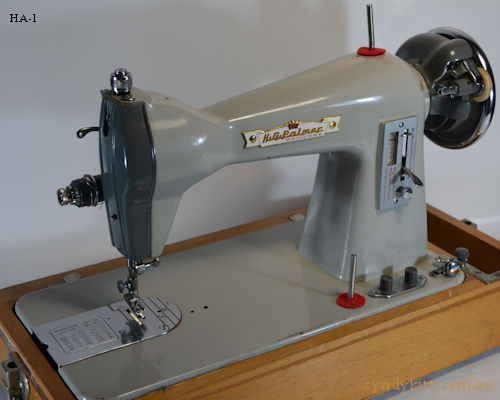|
|
|
|
The Japanese HA-1 class was not limited to a single manufacturer and there was a wide variation in features although they are all relatively basic cast steel straight stitch domestic sewing machines which went into production in Japan as part of the peacetime reconstruction; the innovation of that time was the use of specialist contractors who would mass manufacture common parts. Here in Australia (I am sure the story is similar in other countries) most HA-1 were sold as "cleanskins" to retailers who would give them house branding, fit them with locally made motors and furnish them in locally made carry boxes or cabinets. HA-1 machines may be powered by treadle, crank or motor. The HA-1 class is highly recommended to costume makers or anyone else
who wants a machine that will stand up to "abuse", it is still
a domestic machine, but the CB shuttle system (though not as quiet or
smooth) is far more robust than rotary hook shuttle systems of models
like Singer 201, 206
or 401. There were a variety of stitch length controls, but they usually have one similar to the 15K88 (like the Palmer Princess above) or German models (like the Pinnock Seweasy at the bottom of the page) All HA-1 models use a 1 o'clock "15
class" bobbin case, which is one of many reasons why it is very
risky to refer to HA-1 as "Singer 15 Clones",
a passing similarity and family resemblance doesn't make a clone, and
while there is shared DNA, there are influences from German and Italian
made CB models. Toyota and Brother were two of the |
|
 |
|
 |
Early 1950s Mitsubishi |
 |
Circa late 1950s or early '60s "Empisal", uncertain manufacturer. |
 |
Circa 1960s HG Palmer branded, manufactured by Brother |
Sunlik are a "mystery" brand but I suspect this machine
was manufactured in Taiwan in the early 1970s
|
|